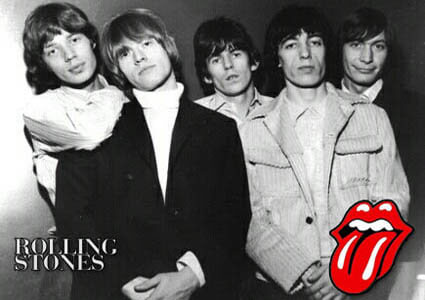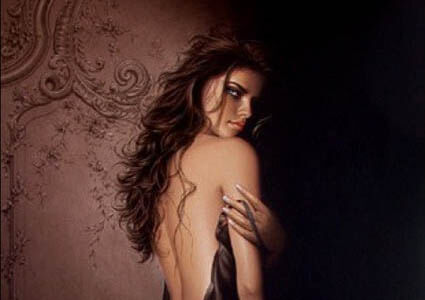Dark City – A Cinematic Masterpiece of Visual Effects and Deep Storytelling
Released in 1998, Dark City is a neo-noir science fiction film directed by Alex Proyas. Known for its mind-bending plot and stunning visuals, the film explores themes of memory, identity, and control in a dystopian world where the city itself seems to be a shifting, sentient entity. With a visually captivating aesthetic, Dark City stands as a testament to the power of special effects and design in film, and its impact on the genre remains substantial even today.
For actress Jennifer Connelly, Dark City marked a pivotal point in her career, with a performance that captivated audiences and critics alike. Known for her diverse roles, Connelly’s portrayal of the enigmatic, sympathetic character of Emma, who plays a crucial role in the film's unraveling mystery, is a standout. The film was also important for Connelly's career trajectory, propelling her into even more prominent roles in the years to come. Here's an in-depth look at the film's significance, with a deep dive into Jennifer Connelly’s involvement, the groundbreaking special effects, and behind-the-scenes trivia:
Special Effects: A Blend of Traditional and Digital Innovation
Dark City is recognized for its groundbreaking visual effects, which were integral in bringing the film’s surreal world to life. The film’s atmosphere, a grim, almost claustrophobic city constantly shifting and evolving, was a challenge that required both practical and digital effects to create a sense of disorientation and mystery.
- Miniatures and Matte Paintings: In a time before the full-scale digital environments we have today, Dark City utilized traditional techniques like miniatures and matte paintings to create its sprawling, dystopian cityscapes. The filmmakers used intricate models of the city’s towering buildings and streets, which were then blended seamlessly with matte paintings to create a city that felt both expansive and constricting. These techniques laid the groundwork for later films that would push visual effects even further.
- Set Design and Production Design: The film's sets, designed by Patrick Tatopoulos, were key to creating the dark, almost nightmarish atmosphere. The city's constantly changing streets and locations were made possible by practical set-building techniques that allowed for flexibility during shooting. This design helped contribute to the disorienting feeling of the film and allowed the visual effects to shine through in their manipulation of the environment.
- Shifting City Effects: One of the most stunning visual elements of Dark City is the transformation of the city itself. The ability of the city to “shift,” altering buildings and streets, was achieved through a combination of digital manipulation and practical effects. These effects were groundbreaking at the time, showcasing the possibilities of integrating digital technology with traditional set-building techniques to create a living, breathing environment.
- Lighting and Shadow Play: The film’s cinematography, led by Dariusz Wolski, employed bold uses of lighting and shadow to give the city an eerie, constantly shifting atmosphere. The heavy use of contrast and silhouettes added to the surreal, dreamlike quality of the film. The interplay of light and darkness also underscored the psychological and emotional themes of the movie.
Jennifer Connelly: A Star in Transition
When Dark City was released, Jennifer Connelly had already built a successful career, having starred in films like Labyrinth (1986), The Rocketeer (1991), and Requiem for a Dream (2000). However, her role in Dark City was a significant moment in her career, showcasing her range and depth as an actress. Connelly's portrayal of Emma, a key figure whose relationship with the film’s protagonist, John Murdoch (played by Rufus Sewell), is central to the unraveling mystery of the film, helped elevate the film beyond its sci-fi conventions into a more emotionally resonant piece of storytelling.
- The Early Years: Labyrinth and Beyond: Connelly’s career began at a young age, with her first major role being in Labyrinth alongside David Bowie. While the film became a cult classic, Connelly’s subsequent career choices often veered into more dramatic territory. Her roles in Requiem for a Dream (2000) and A Beautiful Mind (2001) cemented her status as a serious actress, earning her an Academy Award for the latter.
- Dark City: A Key Role: In Dark City, Connelly portrays a woman caught in the web of a malevolent, unseen force controlling the world around her. Her emotional performance was integral to the film’s success, providing a grounded human element in a world that felt cold and mechanical. Connelly’s chemistry with co-star Rufus Sewell was one of the film’s highlights, creating an emotional anchor for the audience amid all the bizarre twists and turns.
- Later Career: A Career in Transition: Following Dark City, Connelly continued to grow as an actress, taking on a variety of roles that highlighted her range, including performances in House of Sand and Fog (2003) and Blood Diamond (2006). Her evolution as an actress reflects her ability to take on challenging and complex roles, making her one of Hollywood’s most respected performers.
Makeup and Costume Design: Crafting the World of Dark City
The film’s makeup and costume design played an essential role in establishing the visual identity of Dark City. The production's designers, led by makeup artist Kevin Haney, worked to create a look that blended futuristic technology with the gritty, noir-inspired atmosphere of the city. The costumes were used to distinguish between the various factions in the film and add to the sense of unease and disorientation.
- The Strangers' Costumes: The Strangers, the antagonistic force in the film, were designed with highly distinctive and unsettling costumes. Their sleek, almost otherworldly outfits helped reinforce their cold, emotionless nature. The costumes were intentionally minimalistic, with dark colors and sharp lines, creating a sense of sterility and detachment from the human world.
- Emma's Wardrobe: Jennifer Connelly’s character, Emma, wore costumes that were both elegant and grounded, reflecting her role as both a victim of the city’s manipulation and a character that still retains a sense of humanity. Her wardrobe, including flowing dresses and simple clothing, helped to emphasize her fragility and emotional depth, contrasting with the futuristic chaos of the world around her.
- The Makeup for the Strangers: The makeup for the Strangers involved heavy prosthetics, giving them a gaunt and otherworldly appearance. The use of latex and other materials allowed for the creation of complex, alien-like features without the need for extensive digital work, showcasing the film's commitment to practical effects even in the realm of character design.
Trivia: Behind the Scenes Challenges
- Production Difficulties: Despite its success, Dark City was not without its challenges. The film’s production was plagued with difficulties, including time constraints and budget overruns. The filmmakers had to work around a limited shooting schedule and heavy post-production, particularly when it came to the visual effects and the film’s final cut.
- Budget and Box Office: The film had a modest budget of $27 million but struggled at the box office, grossing only $27 million domestically. Despite this, the film found a lasting audience through home video and later became a cult classic. Dark City was considered a commercial disappointment upon its release but was later reassessed as a visionary piece of filmmaking.
- Director Alex Proyas’ Vision: Director Alex Proyas, who had previously worked on The Crow (1994), brought his distinct vision to Dark City. Known for his dark and atmospheric visual style, Proyas' approach to the film was deeply influenced by his love for classic noir cinema, as well as his desire to create a science fiction film that was deeply rooted in the emotional and psychological experience of its characters.
Impact on Culture and Society
Though Dark City didn’t initially achieve commercial success, it has since been recognized as one of the most influential films of its era. Its combination of noir, science fiction, and psychological thriller elements influenced a generation of filmmakers and is often referenced in discussions about the evolution of cyberpunk cinema. The film’s themes of control, memory, and identity resonated strongly with audiences as society’s relationship with technology began to evolve rapidly in the late 1990s and early 2000s.
- Influence on Cyberpunk and Sci-Fi: Dark City is considered by many to be an essential film in the cyberpunk genre. Its visual style, dark atmosphere, and focus on the role of technology in controlling society helped shape many films and television shows that followed, including The Matrix (1999), which shares many thematic and visual elements with Dark City.
- Philosophical Legacy: The film’s exploration of free will, the manipulation of memory, and the quest for identity resonated with a generation of thinkers, filmmakers, and artists. The philosophical questions raised in Dark City are still relevant today, as society continues to grapple with issues of privacy, data control, and artificial intelligence.
Conclusion
Dark City stands as one of the most visually striking and thematically resonant films of the late 20th century. With groundbreaking special effects, stunning costume and makeup design, and a gripping storyline, the film left a lasting impact on the sci-fi genre. Jennifer Connelly's powerful performance, along with the movie’s philosophical musings on memory, identity, and control, ensures that *Dark City* remains a cult classic to this day.
For Jennifer Connelly, Dark City was a defining role in a career filled with rich, varied performances. The film’s legacy continues to influence her work as an actress and as a part of cinema history. Whether it’s the haunting cityscape, the transformative makeup of the Strangers, or the emotionally charged performances, Dark City has rightfully earned its place as a standout in the world of science fiction and filmmaking.





















